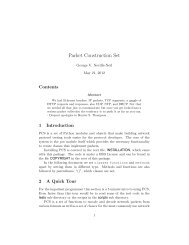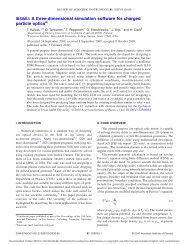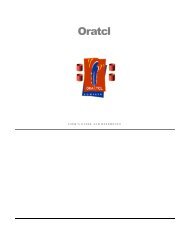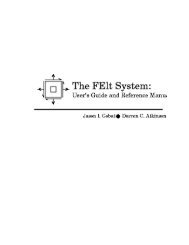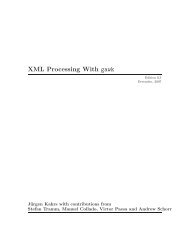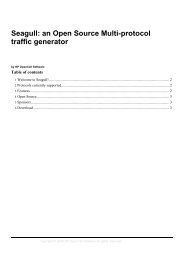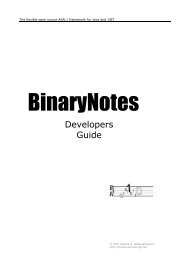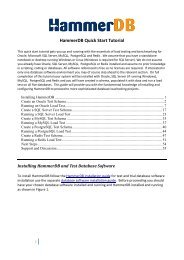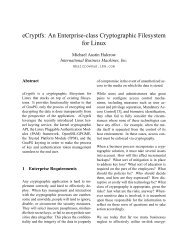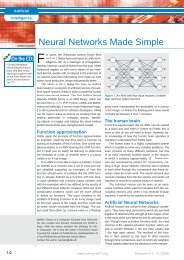System Management Bus (SMBus) Specification, version 2.
System Management Bus (SMBus) Specification, version 2.
System Management Bus (SMBus) Specification, version 2.
You also want an ePaper? Increase the reach of your titles
YUMPU automatically turns print PDFs into web optimized ePapers that Google loves.
<strong>System</strong> <strong>Management</strong> <strong>Bus</strong> (SM<strong>Bus</strong>) <strong>Specification</strong> Version <strong>2.</strong>0<br />
5.6.3.9. Implementation notes<br />
An SM<strong>Bus</strong> ARP Master in a Hot Plug <strong>System</strong> will typically not require the host notify command as it gets<br />
asynchronous indication of a device added or removed via other means, though there’s no restriction in this<br />
specification against using this notification in those types of applications.<br />
A mobile system that has addition and removal of devices on the SM<strong>Bus</strong> can benefit from this command if<br />
the SM<strong>Bus</strong> ARP Master and the removable devices support this command. (Note, there could be one<br />
device in the system that performs the notify on behalf of other devices. <strong>System</strong> software must always run<br />
the FULL ARP process.)<br />
5.6.3.10. ARP execution<br />
The ARP Master must always execute the ARP when it enters the working state and anytime it receives an<br />
SM<strong>Bus</strong> status change indication (device added or removed – e.g. hot plug). The process begins with the<br />
ARP Master issuing the “Prepare To ARP” command. In all cases the ARP Master must be able to resolve<br />
addresses when it receives the “Notify ARP Master” command.<br />
If the possibility exists that SM<strong>Bus</strong> devices may join the system without a corresponding system reset (for<br />
example in hot-plug-capable systems), the ARP Master may optionally choose to issue the Get UDID<br />
(General) command at least once every 10 seconds in order to discover newly added devices that require<br />
address resolution but that don’t support the “Notify ARP Master” command. No device whose AR flag is<br />
clear will respond to this command. However, a newly added device will enter the system with a power-on<br />
reset, which will reset its AR flag. It will respond to a Get UDID (General) command with its UDID. The<br />
host may choose to assign such a newly added device a non-conflicting address or it may choose to re-ARP<br />
the entire bus.<br />
The ARP Master or any other SM<strong>Bus</strong> master can perform device “discovery” or “enumeration” by<br />
executing a subset of the ARP. This is accomplished by issuing the “Prepare To ARP” command followed<br />
by repeatedly issuing the general “Get UDID” and “Assign Address” commands until no device<br />
acknowledges. Until the ARP process is complete the ARP Master must not wait more than two seconds<br />
before issuing a general “Get UDID” command after issuing the previous general “Get UDID” command.<br />
This restriction is important to allow another SM<strong>Bus</strong> master to determine when it is safe to do an<br />
enumeration of the bus.<br />
SBS Implementers Forum 44



